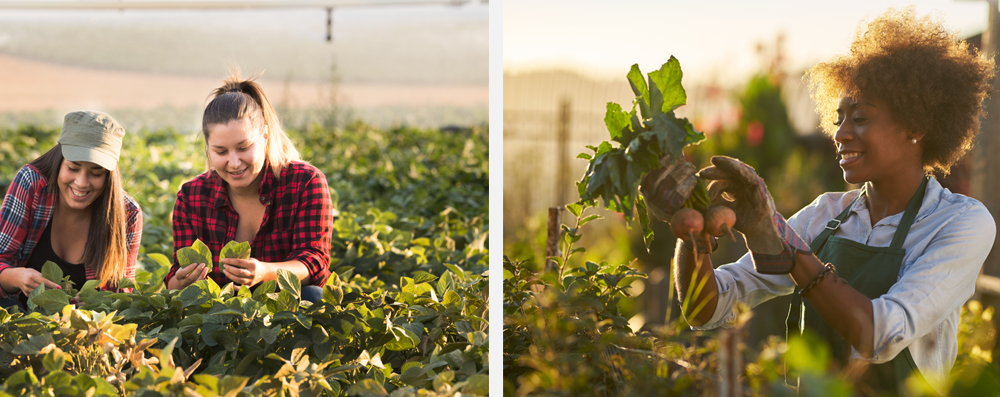Water is an indispensable element in all plant life. It composes up to ninety percent of a plants total mass. As a function of a plants metabolic rate water dissolves the soluble nutrients in the soil and makes them available for absorption by the roots. Water is an important component in photosynthesis and transpiration. Ninety percent of the water taken up by the plant is transpired from the stomata in the leaves cooling the plant tissues. The water within the plant also keeps the plant turgid.
The medium a plant is growing in is important. The medium's porosity and water retention ability will affect the amount of water you must apply and its frequency. An open porous medium will have a good balance of air and water. This will allow the plant to develop and maintain a healthy root system. The amount of water you apply must also take into consideration the water loss from the soil surface by evaporation. The combination of the water loss from both the plant through transpiration and the evaporation of water from the soil is called evapotranspiration.
The Water loss by evapotranspiration increases the humidity around the plant and reduces the plants demand for water. The higher the relative humidity the better the plant will tolerate extreme high temperatures. It should be noted that excessive humidity would increase the likelihood of the plant contracting diseases.
Light and temperature will affect the plants demand for water. In higher light levels, the plant will be photosynthesis and grow more. The higher light usually means warmer temperatures and with warmer temperatures, the plant will have a greater demand for water for cooling through transpiration. The opposite is also true. In lower light and temperature plants, require less water. So, in winter plants in our homes will require less water but enough to compensate for the very dry air in our heated homes. Plants that go into winter dormancy will of course require even less water but will also need cooler temperatures. An example of this is the Indoor Yucca, Yucca elephantipes.
Water demand of a plant also depends on the environment where the plant evolved. For example the plant that evolved in a tropical climate with high humidity frequent rainfall and high temperatures will have a large water demand. An example of this is the Weeping Fig, Ficus benjamini. A plant that evolved in a xerophytic environment will have a lower water demand. An example of this is the Peruvian Cactus, Cerecus peruvianus.
The container that a plant is growing in will also affect the plant water demand. A terracotta or clay pot will allow water to evaporate through its porous walls increasing the plant water demand. A plastic pot is not porous reducing the plant water demand. It should be noted that a black plastic pot sitting in direct sunlight will super heat the soil increasing water demand but the high temperatures may be detrimental to the plant.
Measuring Soil Moisture
Waiting until the plant wilts is a bad indicator that its time to water. At that point in time the plant has suffered too much and its development has been set back. The best way is with a moisture meter. The long narrow probe allows you to measure the moisture levels at different depths and areas in the pot with a minimum amount of damage to the roots. It is important to understand that the moisture meter will register the different moisture levels but it is still up to the operator to interpret the readings relative to the individual plant and its environment. Therefore, it is bad advice if you are told that a plant will need 1 cup of water every week. You should be told whether a plant has a high; low; or medium water demand.
General Symptoms of Incorrect Watering
-
Too Little Water
- Leaves curl; the edges turn brown and dry.
- Older leaves will drop yellow.
- Flowers fade and drop quickly.
- Growth is poor.
-
Too much water
- Leaves curl; the tips turn brown.
- Leaves drop, often looking normal.
- Flowers moldy.
- Growth is spindly.
- Soil will have a musty smell.
Water pH
In general most Indoor plants prefer a water pH of 6.0 - 6.5. This can be measured with a pH meter. Most Cactus and succulents like a neutral to slightly alkaline pH of 7.0 -7.2.
Hard Water
Hard Water is high in minerals such as Calcium and Magnesium. This may be compensated for the addition of Sulphur, Iron, or Ammonium nitrate found in fertilizer.
Soft Water
Soft Water is low in Calcium, Niacin and Magnesium. This is usually compensated for by complete water-soluble fertilizers. It is also high in sodium chloride, which kills the plants root hairs.
Fluoride and Chloride
The Fluoride and Chloride in our water harms many plants. You can reduce or eliminate both of them by simply standing your water for at least one day.
Water Temperature
The water temperature should always be at room temperature. This eliminates temperature shock. Remember this includes water your misting and spraying water.
| Common Name | Botanical Name | Water Demand |
|---|---|---|
| Alexander Palm | Ptychosperma elegans | Medium |
| Anthurium | Anthurium Spp. 'Kingston' | Medium |
| Anthurium | Anthurium Spp. 'Crystal Hope' | Medium |
| Anthurium | Anthurium Spp. 'Nicoya' | Medium |
| Aralia 'Fabian' | Polyscias scutellaria 'Fabian' | Low |
| Black Aralia | Polyscias guilfoylei | Low |
| Black Olive 'Shady Lady' | Bucida bucerus 'Shady Lady' | Medium |
| Cast-Iron Plant | Aspidistra elatior | Low |
| Chicken Gizzard Aralia | Polyscias crispate 'Chicken' | Low |
| Chinese Evergreen | Aglaonema hybrid 'Green Lady' | Low |
| Chinese Evergreen | Aglaonema hybrid 'Royal Ripple' | Low |
| Chinese Evergreen | Aglaonema hybrid 'Queen of Siam' | Low |
| Chinese Evergreen | Aglaonema hybrid 'Jewel of India' | Low |
| Chrysanthemum | Chrysanthemum spp. | High |
| Common Oleander | Nerium oleander | Medium |
| Corn Plant | Dracaena fragrans 'Massangeana' | Low |
| Croton | Codiaeum variegatum 'Petra' | Medium |
| Devil's Ivy | Epipremnum aureum 'Golden Pothos' | Low |
| Dracaena 'Lemon Lime' | Dracaena derenemsis 'Lemon-Lime' | Low |
| Dracaena 'Janet Craig' | Dracaena deremensis 'Janet Craig' | Low |
| Dracaena Reflexa | Dracaena reflexa 'Song of India' | Low |
| Dumb Cane | Dieffenbachia hybrid 'Camille' | Medium |
| Elephants Ear | Alocasia amazonica | Medium |
| Fern | Nephrolepsis Spp. | High |
| Ficus 'Alii' | Ficus maclellandii 'Alii' | High |
| Ficus 'Amstel King' | Ficus maclellandii 'Amstel King' | High |
| Gardenia | Gardenia jasminoides | Medium |
| Hawaiian Schefflera | Schefflera arboricola | Medium |
| Hibiscus | Hibiscus spp. | High |
| Ivy | Hedera helix | Medium |
| Kentia Palm | Howeia forsteriana | Medium |
| Lady Palm | Raphis excelsa | Medium |
| Madagascar Dragon | Dracaena marginata 'Tri-Colour' | Low |
| Madagascar Dragon Tree | Dracaena marginata 'Magenta' | Low |
| Mandevilla | Mandevilla amabilis (hybrid) | Medium |
| Ming Aralia | Polyscias fruiticosa 'Ming' | Low |
| Nephthytis | Syngonium podophyllum 'White Butterfly' | Medium |
| Norfolk Island Pine | Araucaria excelsa | Medium |
| Peace Lily | Spathiphyllum Spp. 'Sonya' | High |
| Peruvian Cactus | Cerecus peruvianus | Low |
| Poinsettia | Euphorbia pulcherrima | Medium |
| Prayer Plant | Maranta leuconeura | Medium |
| Rubber Plant | Ficus elastica 'Melany' | High |
| Satin Leaf | Chrysophyllum oliviforme 'Satin Leaf' | High |
| Snake Plant | Sansevieria zeylanica | Low |
| Spider Plant | Chlorophytum comosum | Medium |
| Tupidanthus | Tupidanthus calyptratus | Medium |
| Umbrella Tree | Brassaia actinophylla | Medium |
| Var. Hawaiian Schefflera | Schefflera arboricola 'Goldfinger' | Medium |
| Var. Weeping Fig | Ficus benjamina 'Snow' | High |
| Washingtonia Palm | Washingtonia robusta | Medium |
| Wax Plant | Hoya carnosa | Low |
| Yucca | Yucca elephantipes | Low |
Happy indoor gardening!




